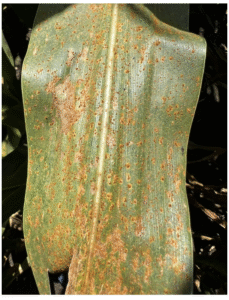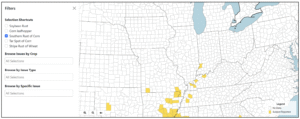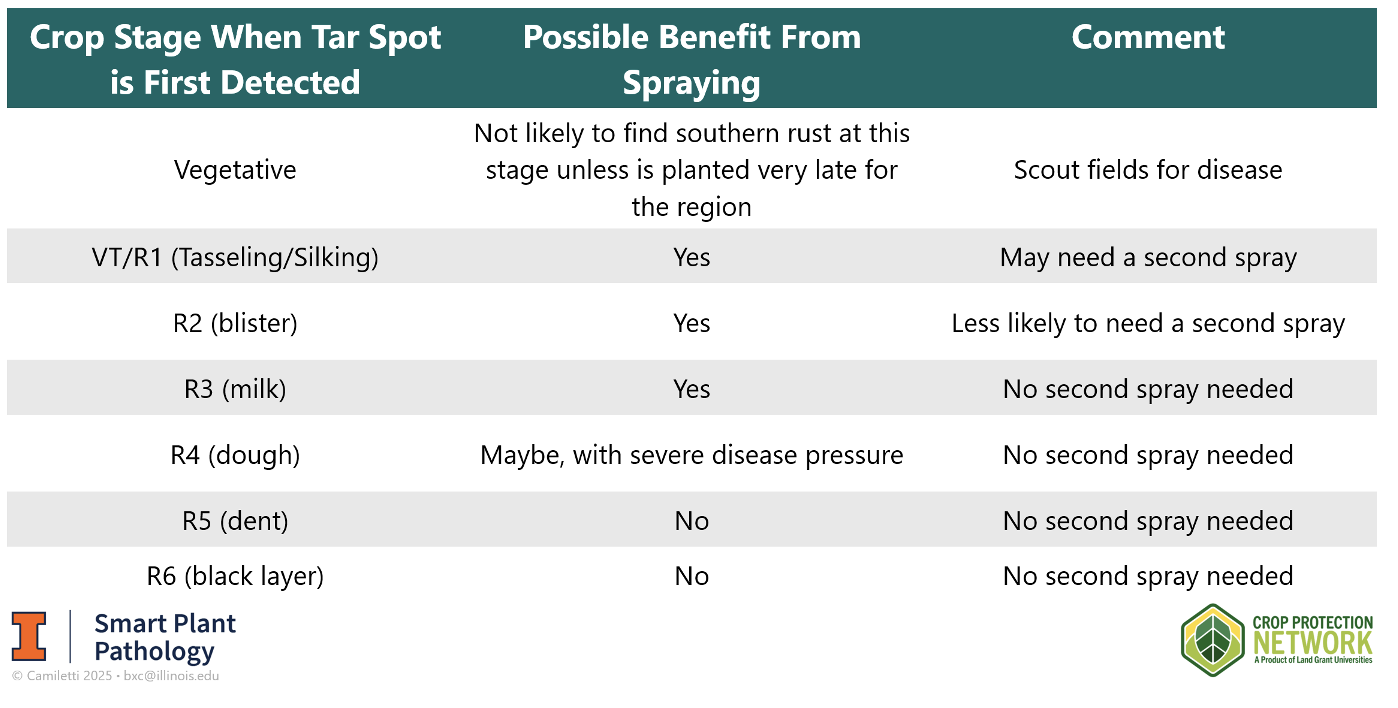Southern Rust Confirmed Near Illinois: What You Need to Know
Southern rust of corn, caused by the fungus Puccinia polysora, has recently been confirmed in counties of Indiana and Kentucky bordering southern Illinois. While not yet confirmed in Illinois this season, its proximity makes it important to stay alert, scout actively, and be prepared to manage the disease if it arrives.
Recognizing Southern Rust
Southern rust produces small, orange to light-brown pustules typically found on the upper surface of corn leaves, often concentrated in the upper canopy. These pustules are powdery and can appear in dense clusters, especially during warm and humid conditions (Figure 1).

In contrast, southern rust is less common in Illinois because it typically blows in from southern states later in the season. However, when it arrives early and is left unmanaged, it can lead to significant yield losses. Its rapid development under warm, humid conditions and its ability to reduce the plant’s photosynthetic area make it a more serious concern—especially in susceptible hybrids.
Submitting Samples to Confirm Diagnosis
Because southern rust and common rust can look similar, especially in early stages, identifying the correct disease in the field can be challenging. If you suspect southern rust in your corn, submitting a sample to the University of Illinois Plant Clinic is the best way to confirm the diagnosis.
Submission details and form: https://extension.illinois.edu/plant-clinic
Tracking the Spread
To keep up with real-time disease reports, use the Crop Lookout tool from the Crop Protection Network. This tool maps confirmed cases of southern rust (Figure 2) and other crop diseases across the U.S. and Canada.
Access it here: https://cropprotectionnetwork.org/crop-lookout

Management with Fungicides
Timely application of fungicides with multiple modes of action between the VT and R3 stages has been shown to reduce disease severity and protect yield. If southern rust is not observed until R3, the application can be delayed until then, and a second spray is typically not needed (Table 1). For information on the efficacy of specific fungicides against southern and other foliar diseases, farmers can consult the Fungicide Efficacy for Control of Corn Foliar Diseases table available through the Crop Protection Network.
Table 1. Guidance on potential benefits of fungicide applications when southern rust is first detected at different corn growth stages.






